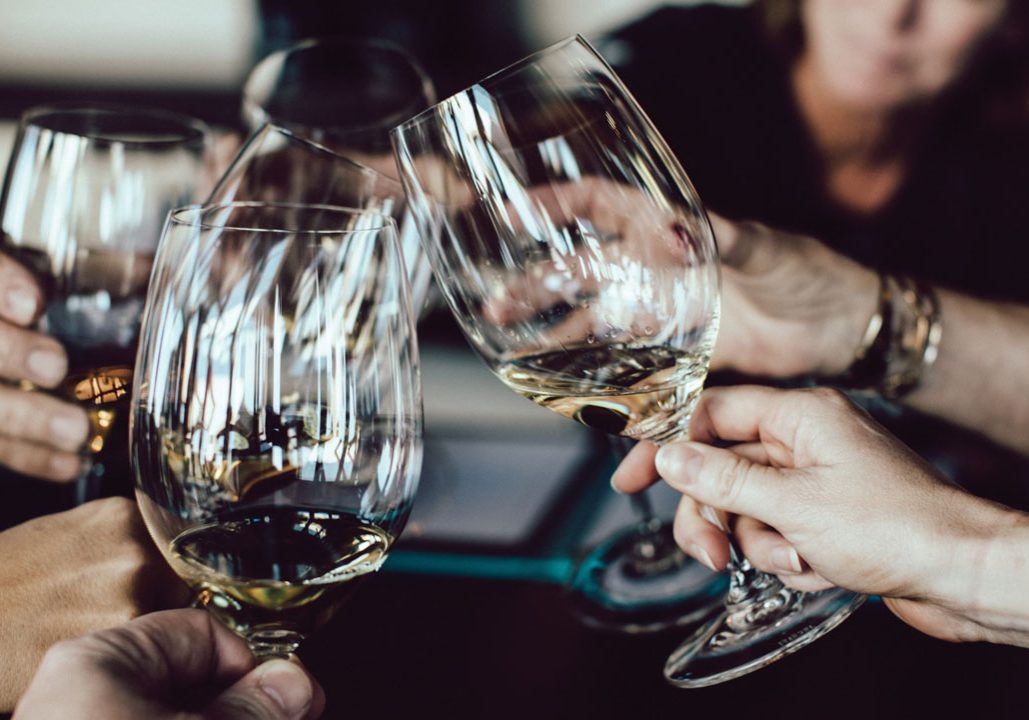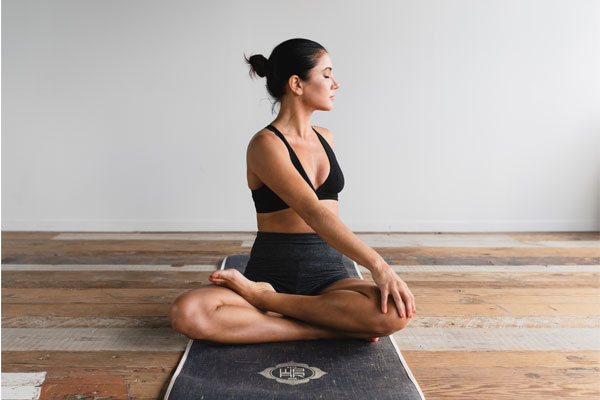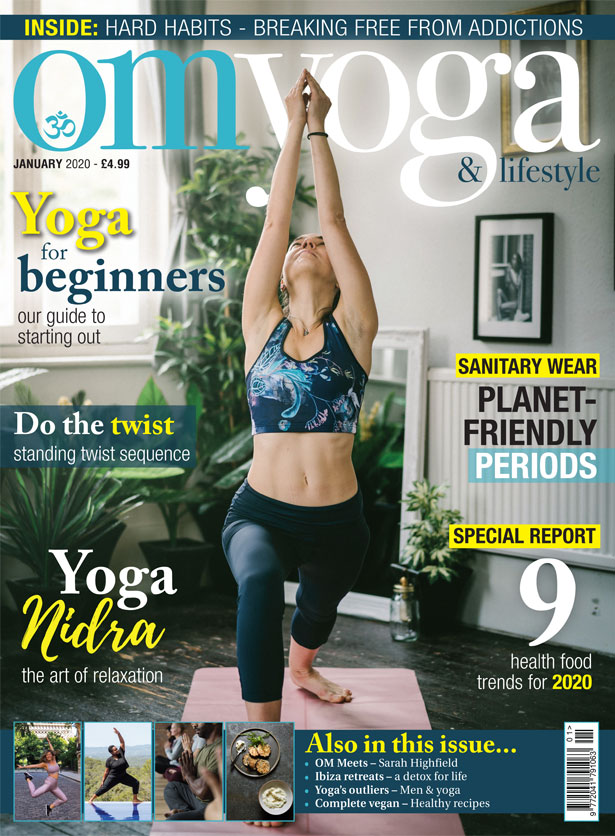
Hard habits
Pressing the pause button on your habits can do wonders for your health and happiness. By Meg Jackson
As of today, it has been 25 days since I drank any booze. Yes. I am feeling quite smug about it, actually, so thanks for asking.
One evening my girlfriends and I met for dinner after a month or so of us all being ‘on it’ more than we usually would have been. We all came to the same realisation that drinking something boozy was not only happening at special occasions, or as a treat, but also as an end-of-the-day necessity.
I should point out at this point that none of us have a serious problem with drinking so deciding not to do it for a while came from a place of slight discomfort rather than actual medical need. Nevertheless, we all felt that we weren’t entirely happy with the situation so formed a pact and decided to be booze-free for a whole month. We celebrated our decision with a beer (of course we were going to start tomorrow!).
We’d decided to go cold turkey; no gradual weaning or having the occasional small glass whilst we and our livers got used to the idea. No sooner had I pushed the bottle opener to the back of the drawer than I got a stonking cold. I’m not saying that the residual alcohol in my system was keeping the germs at bay, but I was very close to binning off the Lemsip and ginger tea in favour for a hot toddy on a number of evenings just to prove a point.
My yoga teacher is a wise man, so when he told me that anything that’s “just a habit” can be broken, I believed him. I should have known better. Of course, he wasn’t lying but I’d happily forgotten the fact that he’d also added “of course it’s going to be really hard…”.
But here’s the thing — as soon as the snot-induced bleariness had cleared, I started to feel better, and not just because the germs had left me. I had no idea that my nightly ‘just one drink’ had imperceptibly surrounded me in what is accurately described as a brain-fog. Once I got my head around the fact that I could enjoy dinner out without an accompanying glass of wine, and that there are grown-up fizzy drinks out there which can almost be as pleasing as a glass of something bubbly, the habit was broken.
Because that’s all it had been — a habit. A pattern that I was mindlessly repeating.
A behaviour that I allowed myself to participate in because I believed that what I got out of it could only be more pleasant than what I’d feel without it. I’d like to think that a (vaguely) sensible woman like me would only have strong beliefs such as this after robust testing of the other options; but I hadn’t.
Finding ways through which we can live our best lives and thoroughly testing them is, ironically, one of the things our yoga practices should be encouraging and empowering us to do at every step. So you’d think I’d know better. (Sorry, yoga.) More than that, our practices give us a massive magnifying glass through which we can look at our not-so-great patterns of behaviours and thinking both on the sticky mat and off it. (Spoiler: they’re usually the same in both places.)
Notice your patterns in your asana practice. Are you scared of something new because you’re worried about ‘failing’ at it? Do you find it hard to commit to one style or type of practice? Is your time on the mat spent with more focus on worrying what you think the teacher wants you to be able to do, rather than what you actually need to be doing for your body? As soon as you get something wrong does your inner critic say ‘ah well — I’m sure there’ll be another opportunity to have a go at it’ or lambast you with cries of how you’re the worst person in the whole room?

The first step of changing anything is getting aware of it; the identifying what you want to change and being realistic about the depth of this particular furrow that you’ve ploughed for yourself. Every time we do action A instead of not doing action A, we plough that furrow one more time. It’s a handy metaphor but one that science has shown actually happens in our brains. Ok — we’re not ploughing stuff up there, but the more certain neurological pathways are fired the stronger those links get. Great news if we’re learning to play the piano and practicing our scales, not so good if we’re downing a whole bar of Dairy Milk every night.
These patterns (or Samskaras if we’re using yoga speak) can be pretty deeply ingrained for some of us, so know when this is something that you can tackle on your own or when you may need a bit more support — whether that’s professional counselling or the support of a group of awesome chums who are willing to support you (*waves at her lovely sober girlfriends*).
If you’re stepping onto your sticky mat or sitting down for meditation on a regular basis, you’re already an intention-setting expert. Perhaps without consciously doing it, you know that you’re engaging with your practices because ultimately you want to feel a certain way at the end of it.
Getting clear with an intention is like setting your inner Sat Nav and, if nothing else, gives you a reason to get to the end of your practice. So take this tool and use it when you’re tackling a habit too; my intention to feel better than I did when I was drinking was enough to stop me from having ‘just this one’ drink when the cravings were really tricky. I also had a clear intention that I wanted to authentically support the rest of my friends, so drinking when they weren’t wasn’t going to enable that at all.
Remember that intentions can be daily (or hourly) reminders to keep you on track, or big ideas about how you want to live your whole life; use them as you need. Just as in our practice we can use the intention to feel strong and empowered to get us through a 60-minute core conditioning class, or use an intention to be a decent human to get us through life; take it, test it, and use it.
It’s only fair that I give you a bit of a warning at this point. I’ll take a bet that the more yoga you’ve done, the better you’ve felt, so the more yoga you’ve wanted to do and the more committed you’ve become — right? Yeah, well this whole habit-breaking stuff can work the same way.
As my head gets clearer, I’m getting aware of how out of touch I’ve been with so many aspects of my life both on and off the mat. Suffice to say that my smugness levels could soon be off the scale. I’ve found that I actually want to do more asana practices; actually, it’s not want, it’s need. It’s like I can finally hear my body telling me what it needs that day. I’m sitting down for meditation practices way more often than I was before. I’m even beginning to get aware of how much time I spend on social media and how rubbish it generally makes me feel.
If you’ve ever done a Vinyasa Flow class you’ll be familiar with the oh-so-satisfying feeling that runs through your veins when your teacher gets you to just pause midclass. They give you the opportunity to stop moving, which allows you to really tune in with everything that is going on inside; to notice how you feel, what you’re thinking, and (hopefully) how awesome everything is in that one moment.
Pressing the pause button on your habits, by getting aware of the pesky things, gives you a similar feeling; you get to see where you are and feel what you feel. It allows you to notice what’s really going on, remember your intention, then set off again into the ultimate yoga practice — living in the real world.
Meg Jackson is the founder of Real Life Yoga – a movement to help real people bring a little (or a lot) of yoga into their real lives. Join her online for a 28-day yoga journey and go from Zero to Yoga Hero. Visit reallifeyoga.net to discover more and sign up.


